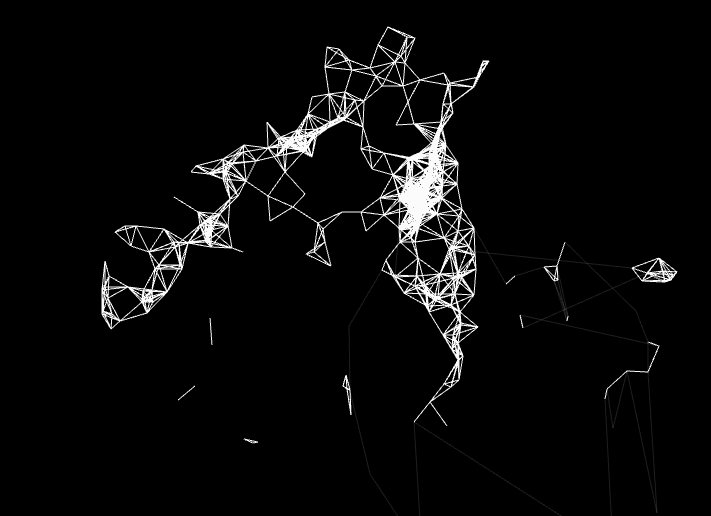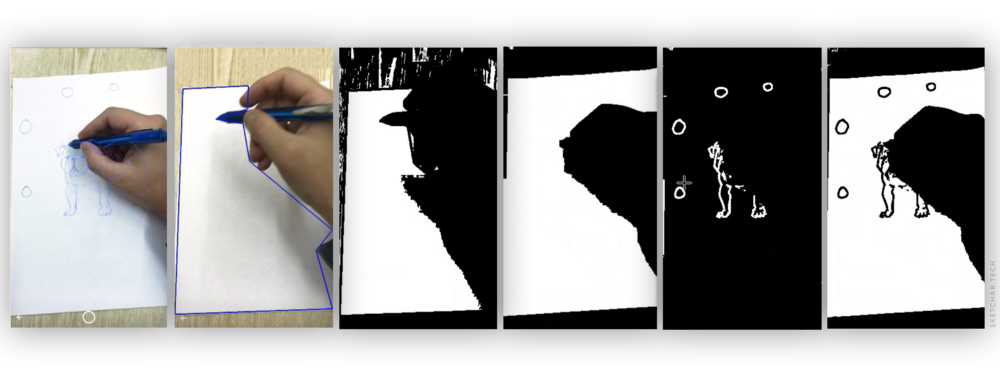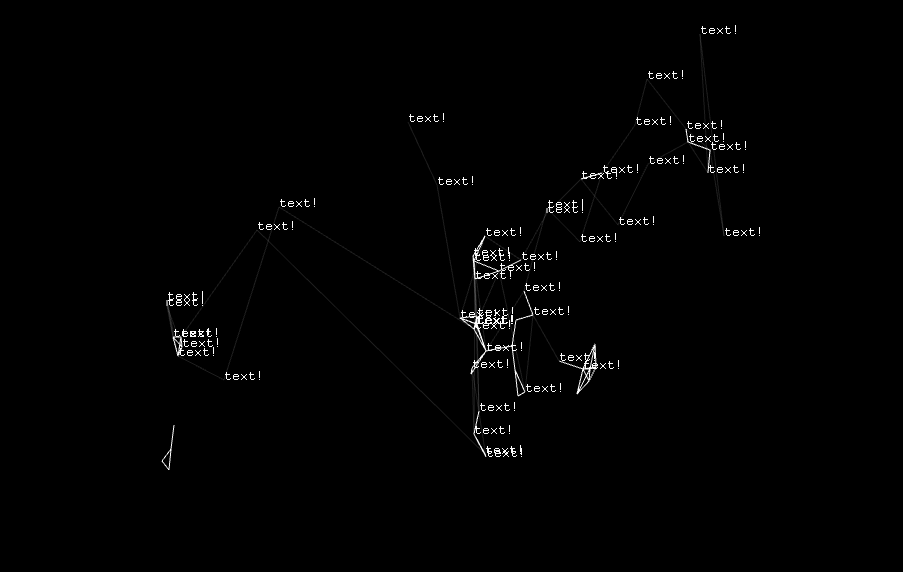Writing Process Re-imagined: The Bible
This artwork is an attempt to re-imagine in an abstract approach the writing process of the Bible, with a focus on abstraction.
produced by: Renato Correa de Sampaio
Introduction
This is a sketch which explores aspects of randomness and typography inside open frameworks. We use vidGrabber and getPixels to change the pixels into lines, projecting it on shapes. It is inspired by onformative’s ‘Growing Data’ and Levin’s ‘Segmentation and Symptoms’.
Concept and background research
For my final project in this second term, I chose to reimagine the Bible as an interactive installation. The Bible is a collection of religious texts that are considered as the cornerstones of Judaism and Christianity. It has its own narrative and is filled with symbolic meanings. As a document, it richly describes the rise and fall of kings in the ancient Middle-East. It is almost impossible to calculate the influence that the Bible had on the Western world (morally, culturally, economically, politically, artistically and spiritually). To put it simply, the Western world was very much shaped by the religious institutions who derived their belief from the Bible. Walter Benjamin wrote:
The Work of Art in the Age of Mechanical Reproduction (1935) 『Its [the film] social significance, particularly in its most positive form, is inconceivable without its destructive, cathartic aspect, that is, the liquidation of the traditional value of the cultural heritage. This phenomenon is most palpable in the great historical films. It extends to ever new positions. In 1927 Abel Gance exclaimed enthusiastically: “Shakespeare, Rembrandt, Beethoven will make films… all legends, all mythologies and all myths, all founders of religion, and the very religions, await their exposed resurrection, and the heroes crowd each other at the gate.”』
As Benjamin explains through Gance, one of the roles that imagery has is to put into light texts and legends in new and original ways, for people to grasp their meaning. The Bible has seen most of itself adapted in movies, cartoons, audio books, etc… As a continuation of this, this artwork covers the abstract and almost invisible influence of the Bible as a book.
Calligraphy
The project puts emphasis on calligraphy and typography. The audience is compelled to draw in order to interact with the installation. In the video, I show the outcome of drawing Hebrew and latin calligraphy, but in fact the audience can interact with the artwork in whichever manner they want.
Inspiration
Nicolas Nahornyj (2015) Lazy Pen – Combining word processing with the emotion of one’s handwriting
SketchAR (2018) Application Predicts what you’re Trying to Draw, using Computer Vision
Dan Hoopert (2013) Mesh
Technical
For its technical aspect, the artwork uses a technique from computer vision. We have a class that loops over the points of our deque, takes the colour we want on our videoGrab, tracks it and draws a line. Inside the class we input our code for our web. In the header file we define a class named Line and it will consist of 2 points which define where the line begins and where it ends. We also define two vectors, drawnPoints, and lines. We use our class to get the values of the point a and b and use ofDrawLine to link them. Inside mouseDragged we ask that if the distance between the current position and a previous position is less than 30 pixel we draw a line between our current point and the history point. We then push the Line in the lines vector, ready do be drawn on the screen.
To “activate“ the artwork, one needs to select the colour they wish to track on the screen. For the installation we use a pen on which a magenta sticker is sticked. Like this, the program follows the nail of the pen according to the movement of the one who uses it.
Further development
As I consider this project incomplete and unfinished, I started to do further improvements. One thing I look forward to implement in the project is text related to the scriptures, to add a dimension of data-related visuals. I plan to do so my creating an array of strings (words) and displaying the text randomly on each line positions, [i].x and [i].y. Below is an example of the future development at its early stage.
Self evaluation
The artwork is obviously not finished and I cannot say that it has reached completion. However the structure and the technics used for its making are what I planned to use and went according to my plan. Ultimately, what I would like to change is the visual outcome of the audience’s interaction with the artwork. The video itself lacks quality but shows effectively what the artwork does. I will have the project done during the summer term, during which I will learn valuable skills in computer vision and enhance the end result of the project.
References
SketchAR Application Predicts what you’re Trying to Draw, using Computer Vision. Available at: https://www.analyticsvidhya.com/blog/2018/03/machine-learning-can-help-you-draw/
Lazy Pen – Combining word processing with the emotion of one’s handwriting. Available at: https://www.creativeapplications.net/processing/lazy-pen/
« Mesh » ne tient qu’à un fil. Available at: https://etapes.com/mesh-ne-tient-qu-a-un-fil/
ofBook - Drawing Lines. Available at: https://openframeworks.cc/ofBook/chapters/lines.html




































































